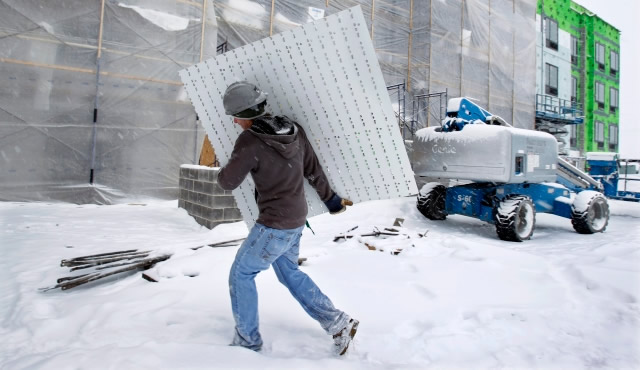A recent inquest of a Canadian worker killed by falling ice on a construction site revealed that safety concerns were raised before the accident. A snow wall had been built to stop workers accessing the most hazardous area on site, however, regular ice removal from the excavation site walls had been stopped, leaving workers vulnerable to being struck by large formations of ice. While building in cold weather is often hazardous, ice can cause particular problems on a construction site. Ice hazards not only pose a risk to workers’ health and safety, it can also affect heavy machinery and cause significant delays to building schedules.
Maintaining Equipment in Icy Weather
Icy weather can create hazardous driving conditions and heavy equipment operators should inspect vehicles to ensure they are roadworthy. Ice can create blind spots if not properly removed from windscreens and mirrors so it should be promptly cleared in order to prevent accidents. Once work is underway, worn tracks on a compact loader will limit its efficiency but replacement Caterpillar 247 tracks will improve its grip, even on icy terrain.
Removing Accumulations of Ice
During the winter, ice can form on raised areas on a construction site where it becomes a falling hazard that can cause serious injuries. Ice can occur as a result of a winter storm or appear overnight if temperatures drop suddenly, and if the weather gets warmer temporarily, there is a heightened risk of icicles forming as soon as the temperature drops again. Promptly removing ice from roofs, excavation walls and scaffolding is essential in order to protect workers from being struck by ice suddenly falling to the ground.
The Effect of Ice on Building Work
While concrete can be poured even when there is snow on the ground, it can never be laid on ice. This is because the chemical reactions that set the concrete are hampered, causing it to crack even if it does eventually cure. In temperatures below 40 °F, using heaters or ground thaw blankets may help to soften the earth, but work will still be slowed considerably. In most cases of very cold weather, especially if it is only due to endure for a few days, it is best to simply stop work on site until the ice thaws naturally.
Working on a construction site in wintry conditions can be difficult, and ice presents a particular hazard both to the safety of workers and the smooth running of a building project..

